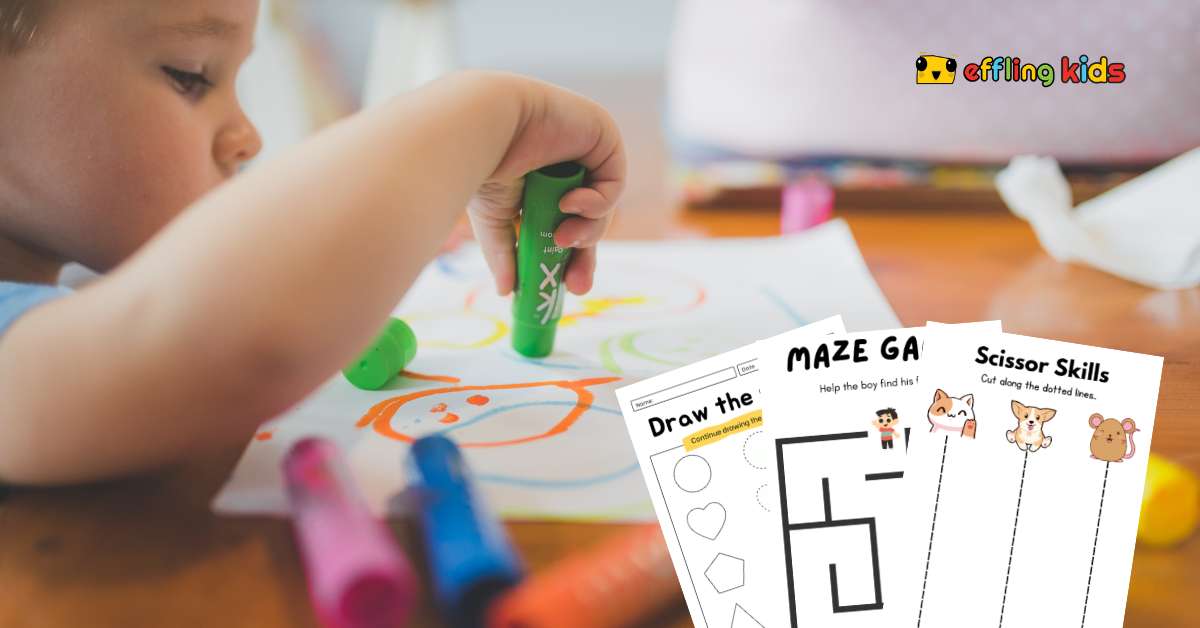Toddlers are tiny explorers in a big world, everything they touch, color, or trace helps build their confidence and coordination. These free printable worksheets are designed to playfully introduce early patterns, numbers, shapes, and colors in a way that feels more like fun than “learning.” Let’s see how they help, and how to use them thoughtfully.
Early Tracing Sheets – A Gentle Introduction to Writing
Why it works: Tracing isn’t just a busy activity, it’s a bridge to drawing and writing. Research shows that combined with modeling and support, tracing can significantly improve letter legibility and writing independence for preschoolers with developmental delays
Example Activity:
Start with a simple zigzag tracing sheet: your toddler follows the line with crayon or finger, strengthening finger muscles. From there, introduce shapes like large circles and squares. You can say, “Let’s trace the bumpy line! Now, can you trace the circle like the sun?”
Pro Tip: Fade tracing guides over time, start with dark lines, then lighter ones, and finally, let them try on their own when ready.
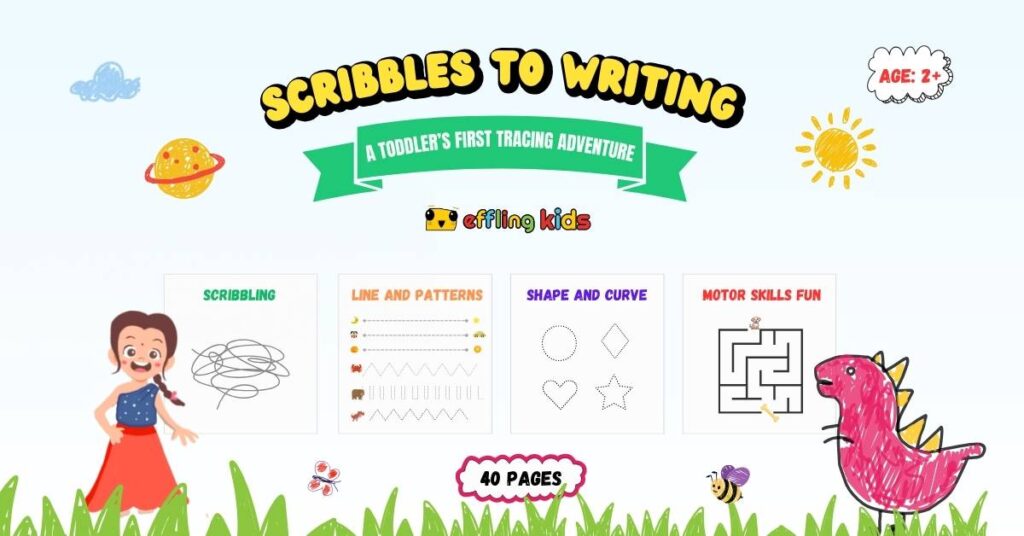
Worksheets Bundle: A Tracing Bundle That Turns Doodles into Skills
Numbers 1–10 – Counting Through Play
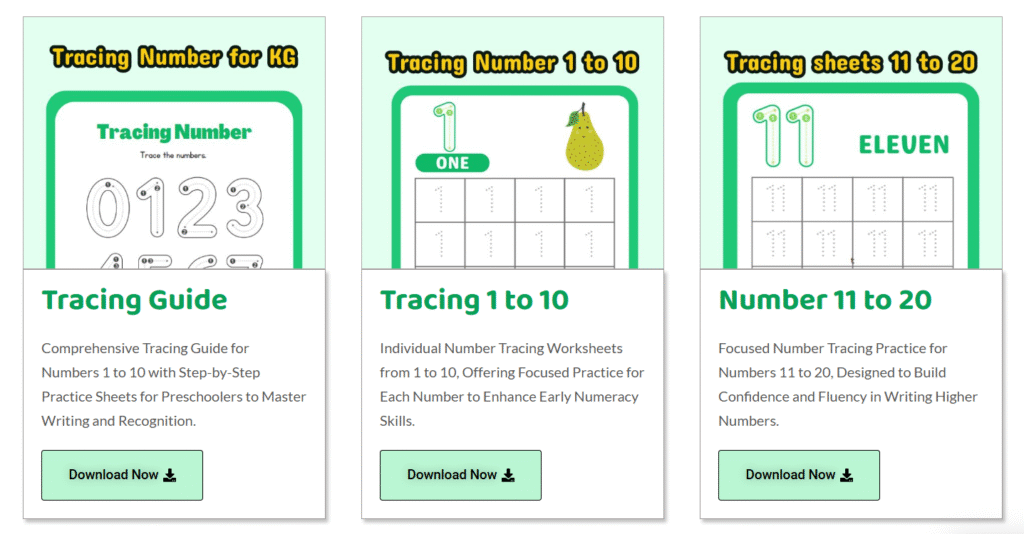
At this age, kids love to point, count, and mimic. Use worksheets with big numbers, chunky pictures (like strawberries or stars), and matching games: “Trace the number 4, and then count four apples and circle them.”
Why it matters: Even simple home experiences, like saying number names or counting objects, are shown to support early number skills as children grow
🔷 Shapes & Colors – Connecting Learning to Everyday Life
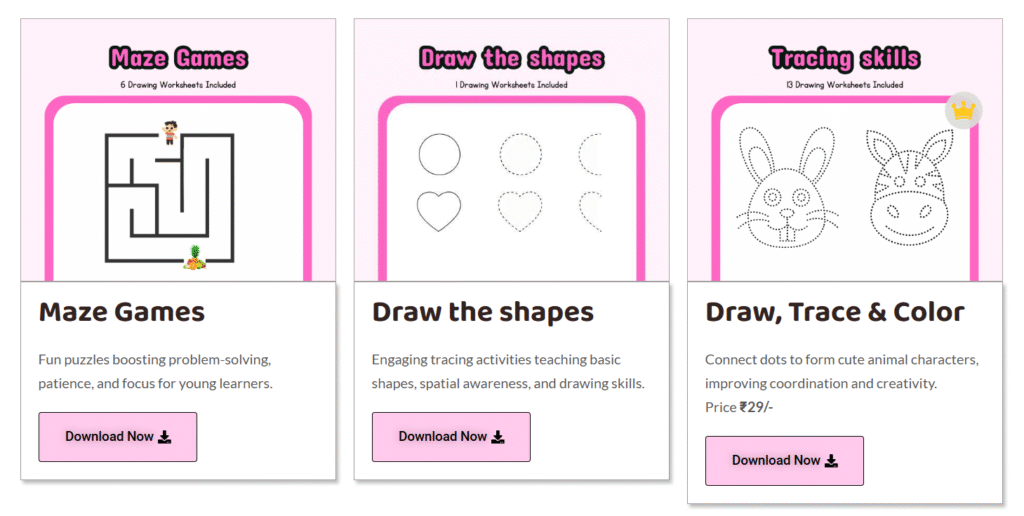
Toddlers see shapes and colors everywhere. Matching worksheets showing a triangle with a slice of pizza or a circle with a ball help them bridge paper to real life. You could say, “This triangle looks just like the roof of our house!”
Why it matters: Visual connections help strengthen memory and recognition, especially when tied to familiar objects.
Coloring Fun – Little Artists at Work
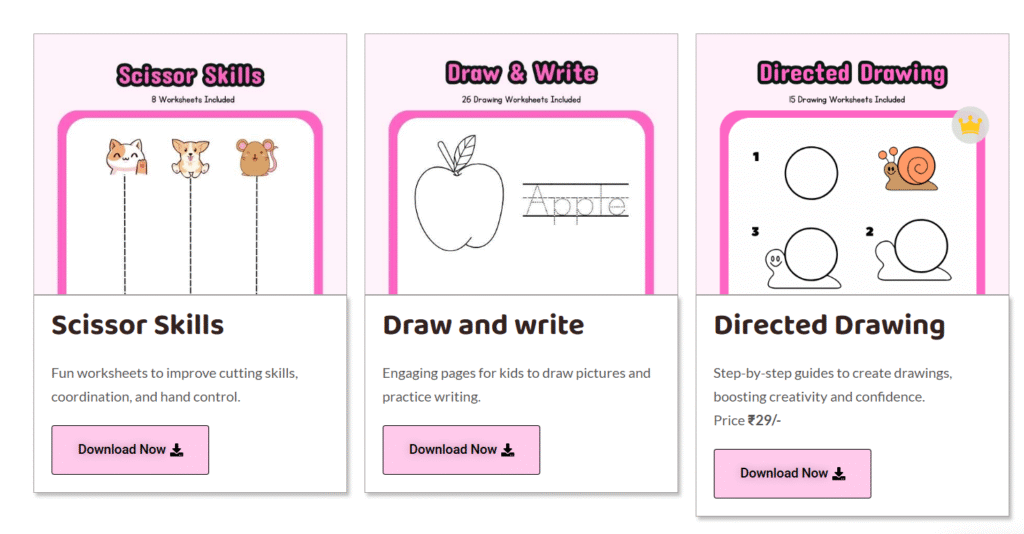
Bold, simple images, like a smiling sun, a big ball, or an outline of a cat, invite toddlers to color in freely. Follow up with questions, “What color is the sun? Do you want to use yellow or orange?”
Why it matters: Coloring nurtures patience, creativity, and motor skills, all in a quiet, screen-free moment.
Expert Insight: The Role of Playful Learning
Experts in early childhood pedagogy emphasize that playful, choice-rich learning supports development far more than structured, desk-bound tasks. Playful learning engages curiosity, supports social-emotional growth, and fosters deeper understanding across multiple domains
Worksheet Pros and Cons: What Research Shows
What’s Positive:
- Many teachers believe worksheets support readiness for school readiness and literacy.
- Especially when paired with prompting and gradual fading, tracing supports skill building, even in special education contexts.
What to Watch Out For:
- Some studies caution that over-reliance on worksheets, without play-based interaction can feel rigid or discourage creativity in young children.
- Tracing without context or guidance may lead children to focus on copying the line, not understanding how the letter is formed or why it matters
How to Use Worksheets Wisely for Toddlers?
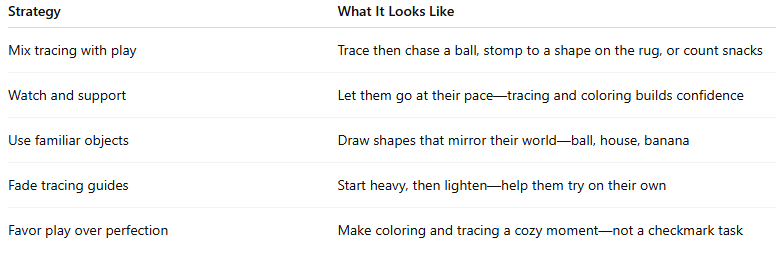
Go Paperless and Play More with Effling Kids App

Worksheets are great… but sometimes the printer runs out or paper piles up. Enter the Effling Kids App—a digital, interactive space where toddlers can trace, count, draw, and explore Hindi, English, Math, and Art safely.
- Ad-free and child-friendly
- Eco-friendly and reusable
- Keeps the joy, removes the mess
FAQ
1. Can my 2-year-old kids really use worksheets?
Yes, with your presence and guidance, these activities become bonding moments that build skills, not pressure.
2. What is available for toddlers in the Effling Kids app?
Kids can start scribbling, drawing lines, curves, shapes, and much more in Effling Kids’s Toddler feature. Try it today, it is free!
3. Should I always trace?
No mix tracing with hands-on play. Some tracing is useful, but only when it’s part of a playful supportive routine.
4. What’s a fun example?
Trace a sun, then go outside and point to a real one. Trace a circle, and then roll a ball together. Learning through context matters.

